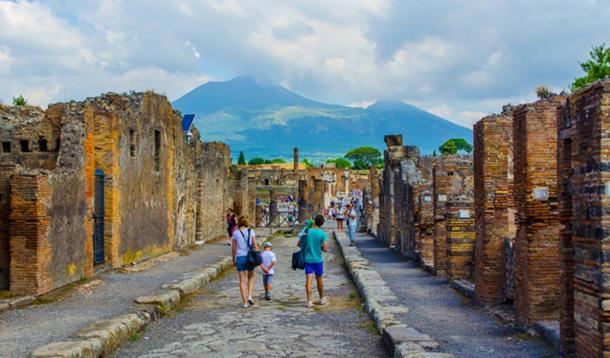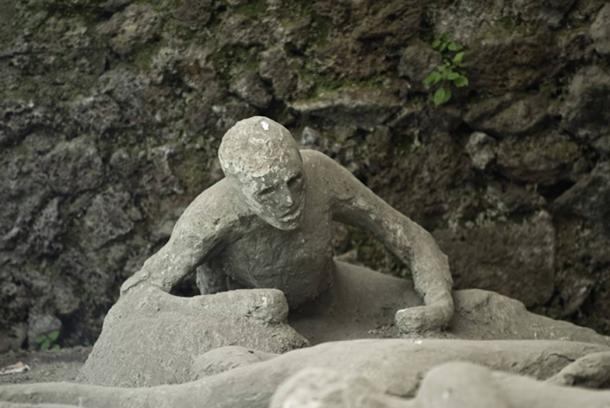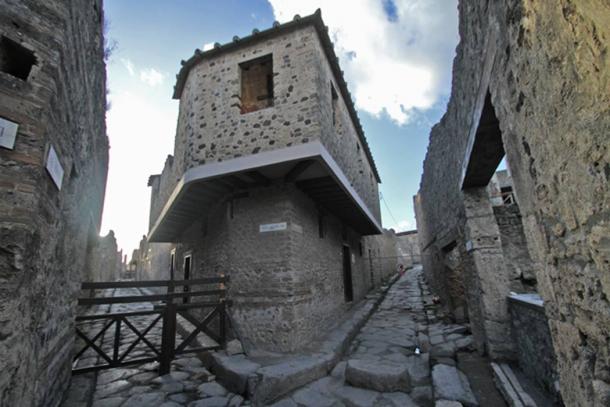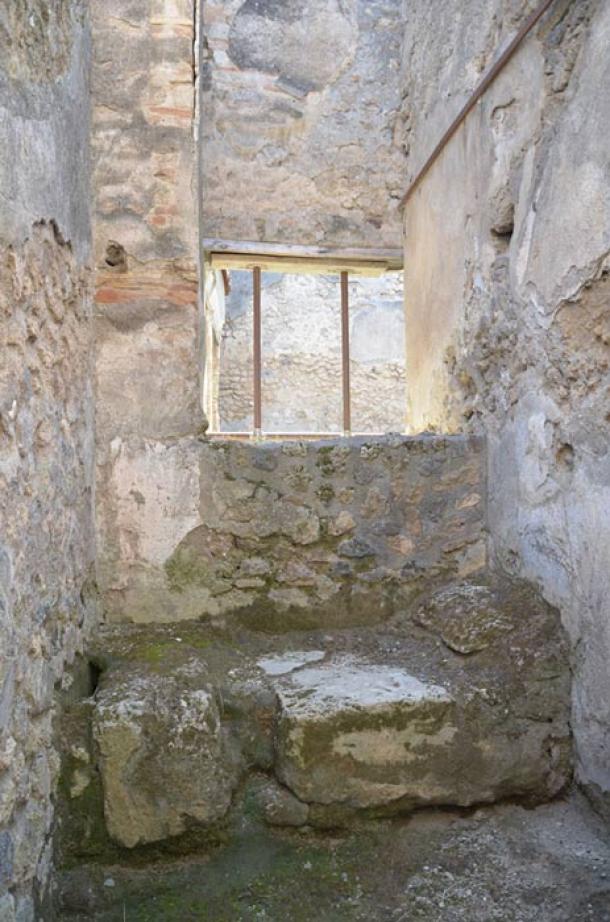Mad emperors, fierce warriors, brutal entertainment, and lascivious lifestyles. These are the familiar images of ancient Rome, but what was it really like? Rumors abounded regarding Roman emperors and their indulgence in the pleasures of the flesh. Tiberius, for instance, is said to have indulged in secret orgies in his pleasure villa on the island of Capri. But until the 16th century discovery of the buried city of ancient Pompeii, the guilty pleasures of the Romans had been mostly hidden from the pages of history.
Ancient Pompeii: Roman Life Frozen in Time
Pompeii is a 6th century BC Roman city frozen in time, preserved by the layers of ash that spewed out from the eruption of Mount Vesuvius in 79 AD. Although Pompeii was initially rediscovered at the end of the 16th century, it was only properly excavated in the 18th century. This was due to the fact that excavators were startled by the sexually explicit frescoes they were frequently unearthing; something quite shocking to the sensibilities of Medieval citizens of Rome, so they quickly covered them over.

Ancient Pompeii was found almost completely intact and visitors can learn about the life of the Romans by traversing its streets and buildings. ( dudlajzov / Adobe Stock)
When excavations resumed nearly two centuries later, archaeologists found a complete city almost entirely intact. Loaves of bread still sat in the oven, bodies of men, women, children, and pets were found frozen in their last moments, fear still etched onto their faces, and the remains of meals were found discarded on the pavement. The astounding discovery meant that researchers could piece together exactly what life was like for the Romans of ancient Pompeii: the food they ate, the jobs they performed, the houses they lived in, and of course, the activities they engaged in for pleasure.

Throughout ancient Pompeii, the bodies of Roman citizens lay preserved in the positions in which they died. ( BlackMac / Adobe Stock)
Discovering the Carnal Pleasures of the Romans in Ancient Pompeii
Excavators unearthed evidence of numerous brothels in the ancient city of Pompeii, as determined by the discovery of both erotic frescoes and graffiti adorning the walls of buildings containing several rooms with stone beds. The phallus was a very common decoration for good luck in Pompeii and it was painted in the houses, streets, and shops.
One of the famous brothels in ancient Pompeii was called the Lupanare (Latin for wolf’s den). Now a UNESCO World Heritage Site, this was a two-story building built just years before the destruction of Pompeii. Believed to be the only purpose-built brothel in Pompeii, the Lupanare had ten rooms and a latrine under the stairs.
Each of the ten rooms had a stone bed covered with a mattress where a prostitute would entertain her clients. Another famous feature of the Lupanare is its erotic wall paintings. Each of the paintings depicts a different position for sexual intercourse , and these are believed to have served as an advertising board for the various specialties that were on offer.

The Lupanare of ancient Pompeii was a brothel, believed to be the only purpose-built brothel in the city. (General Cucombre / CC BY 2.0 )
Despite the erotic nature of these images, it has been suggested that they were merely an idealized version of sex. To regard them as a representation of the actual transaction would be tantamount to regarding contemporary pornography as the real thing. Thus, it has been postulated that the lives of the prostitutes at the Lupanare was far grimmer than the erotic images suggest.
The chambers where the prostitutes worked were windowless, cramped, and uncomfortable places separated from the anteroom only by curtains. Furthermore, it has been suggested that most of the prostitutes in Pompeii were slaves of Oriental or Greek origin. As they were involved in the slave trade and not trained in other professions, it seems that these women had no real alternatives for work. In the CBC program The Nature of Things , Dr. Kelly Olson, a professor of classical studies, visits the Lupanare and claims “it’s not a very nice place to work.”

A stone bed in the Lupanare, one of the brothels in ancient Pompeii. (Carole Raddato / CC BY-SA 2.0 )
Their clients, however, seem to have had a better time at the brothels, as demonstrated by the graffiti that they left behind. There are over 100 inscriptions on the walls of the Lupanare. One inscription, for instance, runs simply as such: “I screwed a lot of girls here.”
Another inscription even records the date that the person visited the Lupanare, “On June 15th, Hermeros screwed here with Phileterus and Caphisus.” The wealthier members of society generally did not visit brothels, as they were able to afford mistresses or slave concubines. Thus, it is more likely that those who frequented the brothels of Pompeii and left the graffiti behind were ordinary Romans.
Interestingly, the clients of the Lupanare also left notes on the wall that allowed archaeologists to work out the prices of the services provided there. It seems that two loafs of bread and half a liter of wine would enable a person to obtain the services of a prostitute. Needless to say, the fees were paid to the brothel owner, rather than the prostitutes themselves. Such is the life of a prostitute in a brothel of Pompeii, as far as the archaeology is able to tell us.
The Lupanare was first excavated by Giuseppe Fiorelli in 1862 and it was during this work that the archaeologists discovered the now almost 2,000-year-old erotic panels on the ground floor of the brothel. The frescos and other sexual objects created by ancient Romans and discovered in the ruined city have been the subject of much contention. The explicit frescos for example were covered, and some claim that up until the 1960s only male visitors were allowed to view them for an additional fee. The ancient brothel was restored and opened to the public after an investment of $253,000.

On the walls of the brothels in ancient Pompeii, as well as the changing rooms of the suburban baths of Pompeii, are erotic frescos. It is not clear whether these were part of a promotional menu for services on offer or simply decorative. (Left: Public domain / Right : Public domain )
Deemed as scandalous at the time of their excavation, many of the more erotic objects discovered in ancient Pompeii were removed and taken to the Naples National Archaeological Museum. They were placed in the Gabinetto Segreto (the so-called “Secret Cabinet”), which was founded by Frances I, the King of Naples, who decided that certain explicit images were to be seen only by “people of mature age and respected morals.” It was only opened to the public in 2000.
These days, the restored Lupanare is open for tourists to explore and learn about prostitution in ancient Pompeii . According to the Daily Mail , several tourists have even tried to relive the sexual antics of the Romans, breaking into the brothel or the suburban baths “to fulfil their fantasies.”
Top image: Erotic fresco discovered in a brothel in ancient Pompeii. Source: Roman / Adobe Stock
By Wu Mingren
Updated on February 9, 2021.
 RSS Feed
RSS Feed















 February 10th, 2021
February 10th, 2021  Awake Goy
Awake Goy  Posted in
Posted in  Tags:
Tags: 













